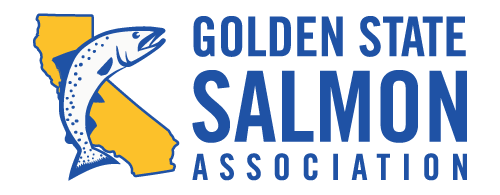From https://www.nbcbayarea.com/news/california/california-increases-salmon-spawning-to-make-up-for-drought/2714916/
In an effort to blunt the devastating toll California’s extended drought has taken on the state’s chinook salmon population, state and federal fish hatcheries in Northern California are spawning millions of additional salmon smolts in order to increase their odds of survival.
The state’s prolonged drought has left many of its dams and rivers unable to supply the cold water currents wild salmon require for their eggs to survive. So, hatcheries are trying to make up for nature’s dry spell with human intervention.
Just below the parched Oroville Dam east of Sacramento, the state-run Feather River Hatchery is spawning an additional 1.75 million juvenile fall run chinook salmon this year. The increase in spawning will result in a total of 7.75 million salmon released by the hatchery this year.

A biologist in the Feather River Fish Hatchery shows a tray of recently collected salmon eggs for spawning chinook salmon. (Nov. 2, 2021)
“We hope the increase of production will help offset some of those drought impacts we’re anticipating this year and insure that when these fish return to the river in three years that there will be enough for both commercial and recreational fisheries,” said Jason Julienne, senior scientist with the California Department of Fish and Wildlife.
Julienne said biologists looked to the past for lessons on how the drought would impact the state’s salmon, which includes the endangered spring run chinook salmon. The road map was there in the numbers.
“In the years following the previous drought, we saw a decline in the number of adult salmon that were returning to the Feather River,” Julienne said.
Inside the Feather River Hatchery, salmon returning from their long journey to the ocean leapt through specially designed fish ladders, following an internal compass guiding them back to the place of their birth to spawn and die. Within the facility, hatchery staff anesthetize the fish and hand-collect the eggs and sperm, filling stacks of trays with the delicate orange roe.
Joe Rosato Jr.
A pair of chinook salmon pause in a fish ladder before continuing their upstream journey to the Feather River Fish Hatchery. (Nov. 2, 2021)

Last year, in anticipation of the drought’s wrath, the state trucked all of its hatchery-born salmon smolts and released them directly into the San Francisco Bay, instead of in rivers, to increase their odds of survival.
“With all the challenges they have now — we have climate change, they have the drought — so we’re taking measures to support these fish,” said Fish and Wildlife spokesman Peter Tira.
With the state in record-dry conditions, the salmon have landed in the middle of the heated tug of war for water, pitting environmental and fishing interests against agriculture. The lack of abundant cold water flows on the state’s rivers and streams in the Central Valley means naturally bred salmon will have a difficult time reproducing.
With the fish on a three-year life cycle, experts said the results of the current drought won’t likely be felt for several years.
“In 2024, three years from now, we’re not going to have very many natural spawning fish out in the ocean,” said John McManus, President of the Golden State Salmon Association. “We should have a fairly decent number of hatchery fish that’ll help us get the fishery through while we wait for water and rebuilding of natural salmon stocks.”
A diminished population of fall run salmon would have a dire impact on Northern California’s fishing industry, which supports a number of coastal communities. In past years, the state has restricted fishing in the face of reduced numbers of returning salmon on the Sacramento-San Joaquin River systems.
In addition to the Feather River Hatchery, the federal Coleman Fish Hatchery near Mount Shasta was also increasing its spawn by 2 million additional fish. McManus said his group urged the hatcheries to increase their production in light of the drought —and was appreciative they’d answered the call.
“So we’re going to be relying on the hatcheries for the immediate future to get us through a couple of bad years,” McManus said.
